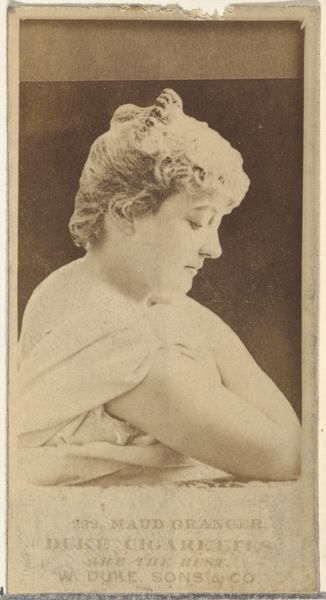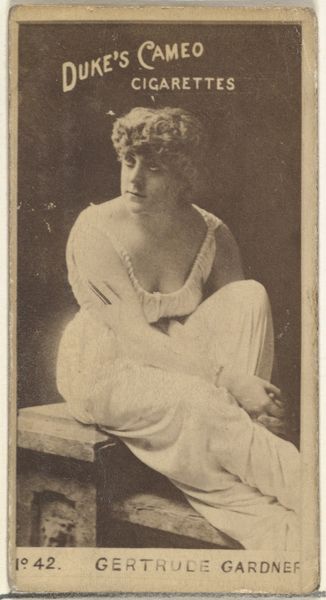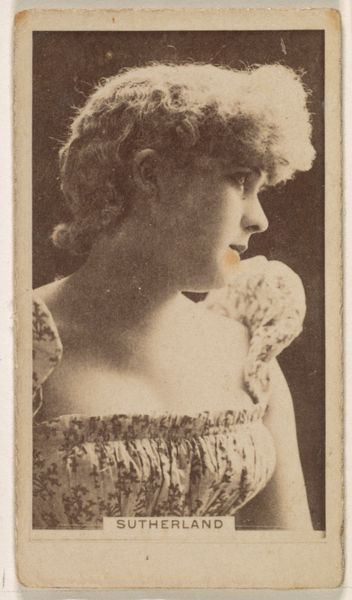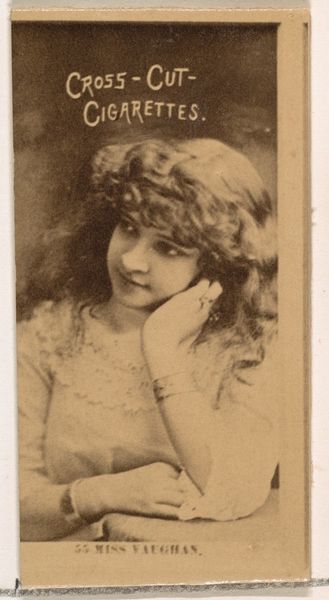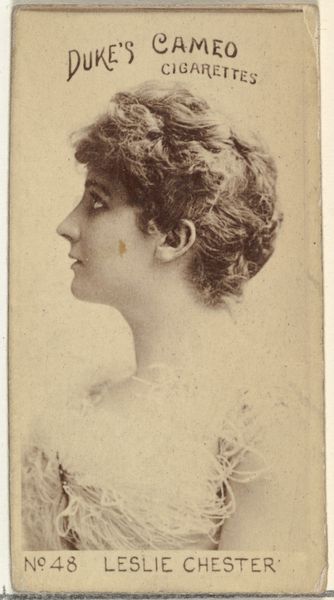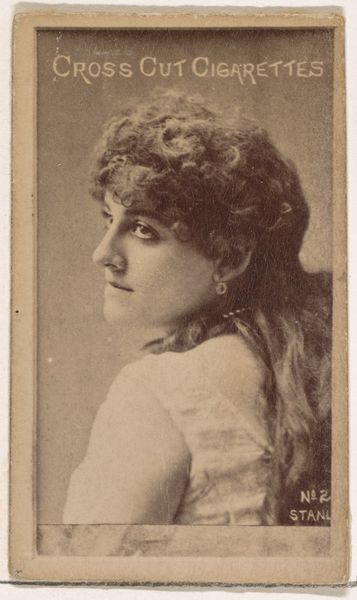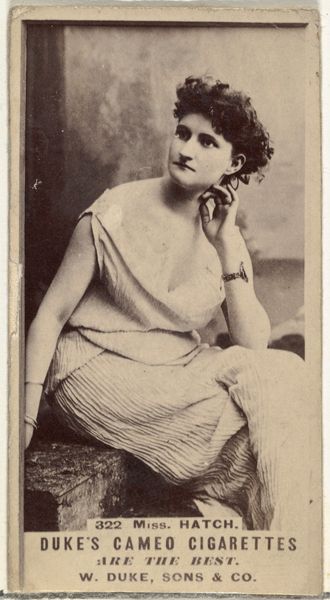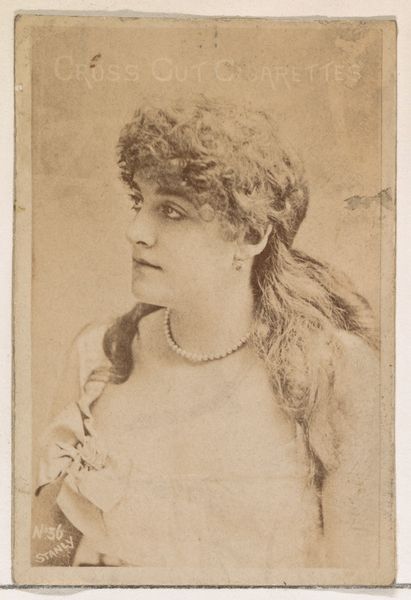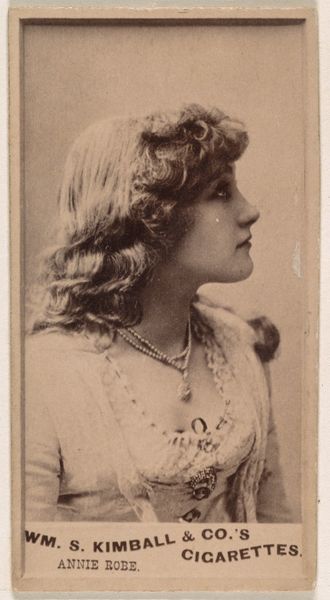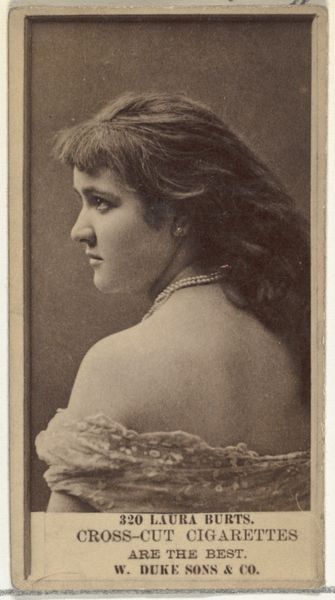
photography
#
portrait
#
art-nouveau
#
pictorialism
#
photography
Copyright: Public domain
Editor: Adolph de Meyer's 1896 photograph, "Träumerei," presents a dreamy, almost ethereal portrait. It's hard to put my finger on exactly what evokes it, but the whole piece feels very melancholic. What do you see in this piece? Curator: I see a careful construction of femininity deeply entrenched in the social conventions of the late 19th century. Notice how the soft focus and sepia tones create a sense of romanticized longing. But let’s push beyond aesthetics. Consider the sitter's passive gaze, the floral crown, the very title itself – "Dreaming". How do these elements contribute to a narrative of female identity defined by interiority and perhaps, even constraint? What are her opportunities for expression within a rapidly industrialising world? Editor: I see your point about the limited roles available to women, but could the floral crown also represent some agency – perhaps a connection to nature and a form of self-expression within those constraints? Curator: Exactly! And that tension, that push and pull, is precisely where the photograph gains its complexity. It exists within the aesthetic language of Art Nouveau and Pictorialism, movements that often romanticized the past. However, doesn’t the deliberate posing and styling of the sitter also underscore how carefully constructed these images, and, by extension, these roles are? Where are the possibilities and limitations present in self-representation at the turn of the century? Editor: So, it's not just a pretty picture; it’s also a commentary on the expectations and restrictions placed on women during that time? Curator: Precisely. It encourages us to question not just what we see, but why we see it, and who benefits from such representation. Editor: I never considered that side of things, it's much deeper than I initially thought! Curator: I'm glad that I provided new ways to approach art today!
Comments
No comments
Be the first to comment and join the conversation on the ultimate creative platform.
